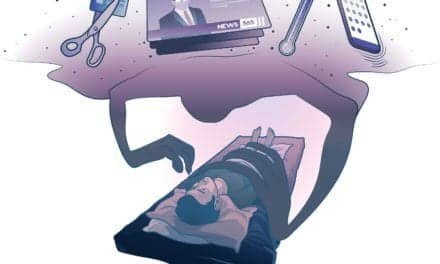Adolescents with high media use, reduced sleep, and low physical activity comprise an “invisible risk” group that has high prevalence of psychiatric symptoms, according to a large international study led by researchers at Karolinska Institutet. The results of the study are published in the February issue of World Psychiatry.
Over 12,000 adolescents (14-16 years old) in 11 European countries answered questionnaires covering different risk behaviors and psychiatric symptoms. Statistical analyses of the results identified three risk groups among the adolescents. Individuals who scored high on all examined risk behaviors clustered in the “high-risk” group (13% of the adolescents). The “low-risk” group (58%) consisted of responders who had no or very low frequency of risk behaviors.
However, in addition to these two expected groups, a third group labelled the “invisible risk” group was identified. Youths in this group were characterized by high media use, sedentary behavior, and reduced sleep. These behaviors are generally not associated with mental health problems by observers such as teachers and parents. However, adolescents in the invisible risk group had similar prevalence of suicidal thoughts, anxiety, subthreshold depression, and depression as the high-risk group.
“As many as nearly 30% of the adolescents clustered in the ‘invisible’ group had a high level of psychopathological symptoms. While the ‘high’ risk group is easily identified by behavior such as alcohol and drug use, parents and teachers are probably not aware that adolescents in the ‘invisible’ risk group are at risk,” says Vladimir Carli, at the National Centre for Suicide Research and Prevention of Mental Ill-Health (NASP) at Karolinska Institutet, first author of the study, in a release.
The study is the first to estimate the overall prevalence of a wider range of risk behaviors and lifestyles and their association with symptoms of mental ill health among European adolescents. The results indicate that both risk behaviors and psychopathology are relatively common in this population. It also shows that all risk behaviors and symptoms increase with age, which is in concordance with earlier studies. Most risk behaviors were more common among boys. Emotional psychiatric symptoms such as depression, anxiety, and thoughts of suicide were more common among girls.


